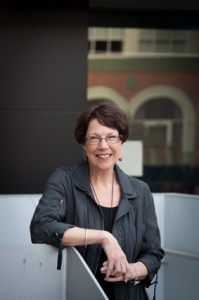Obesity rates getting bigger
Research news
According to new data from the Geelong Osteoporosis Study, 45.1% of men and 30.2% of women are overweight and a further 20.2% of men and 28.6% of women are obese. These figures are based on measures of weight corrected for height, known as the Body Mass Index, or BMI.
Deakin University researcher, Associate Professor Julie Pasco and her research colleagues have just finished a study that reports the extent of overweight and obesity among men and women living in the Barwon region.
The study included 1467 men and 1076 women aged 20 to 96 enrolled in the Geelong Osteoporosis Study, a population-based health study being conducted by the Barwon Epidemiology and Biostatistics Unit at Barwon Health, a strong partnership between Barwon Health and Deakin University’s School of Medicine. Associate Professor Pasco is the Unit Head and lead investigator of the study.
“Measures of height and weight were used to calculate the BMI, which is a commonly-used estimate of adiposity. We also measured waist circumference and found that 27.5% of men and 23.3% of women are overweight, and 29.3% of men and 44.1% of women are obese,” Associate Professor Pasco said.
“It is alarming to realise that these measurements indicate that approximately 60% of the population exceeds recommended thresholds for healthy body composition.
“Our data show that obesity rates have increased by one quarter since the turn of the century. This is of grave concern because obesity is associated with increased risk for developing high blood pressure, type 2 diabetes, heart disease, stroke, osteoarthritis and some cancers.
“In our study we also showed that, compared with women, BMI overestimated the amount of body fat in men, whose excess weight was largely due to muscular body builds and heavier bones. BMI also underestimated the amount of body fat in the elderly.”
The study was published in the international, open access journal, PLoS ONE on Friday January 13th.
The Geelong Osteoporosis Study commenced in the early 1990s and involves over 3000 residents from Geelong and surrounding regions who were selected at random from electoral rolls and invited to participate in the study. Participants visit the research centre at Barwon Health every few years to have their health monitored.
Share this story
 Associate Professor Julie Pasco
Associate Professor Julie Pasco
